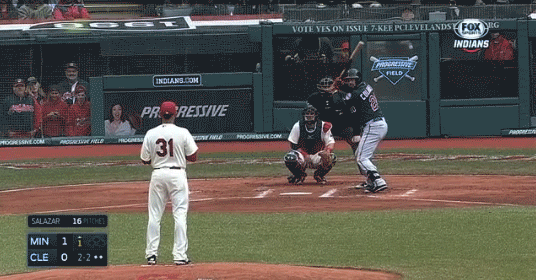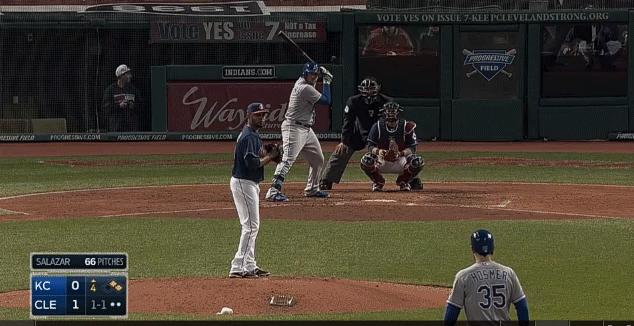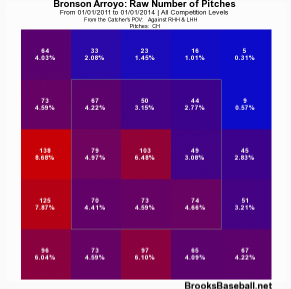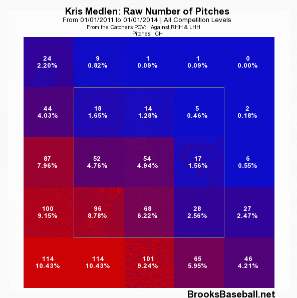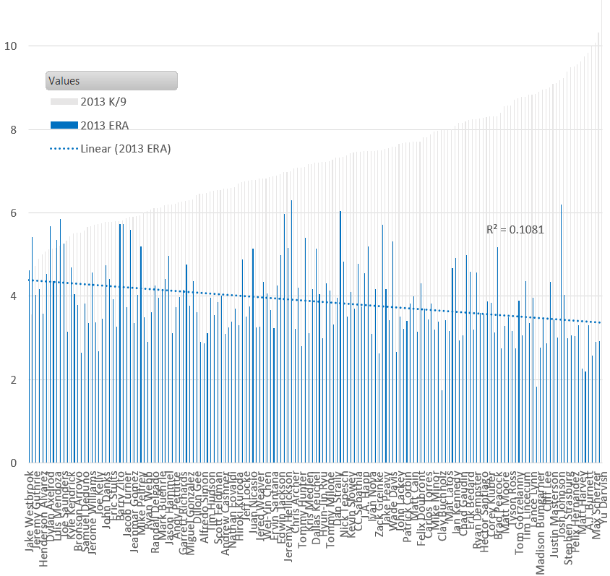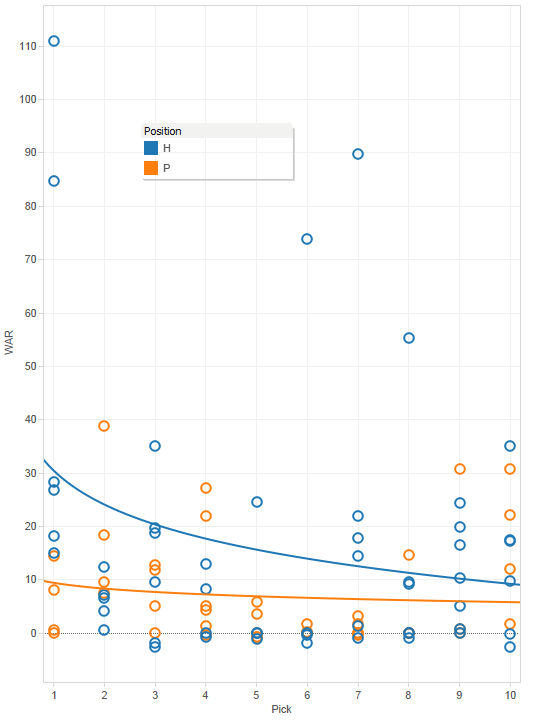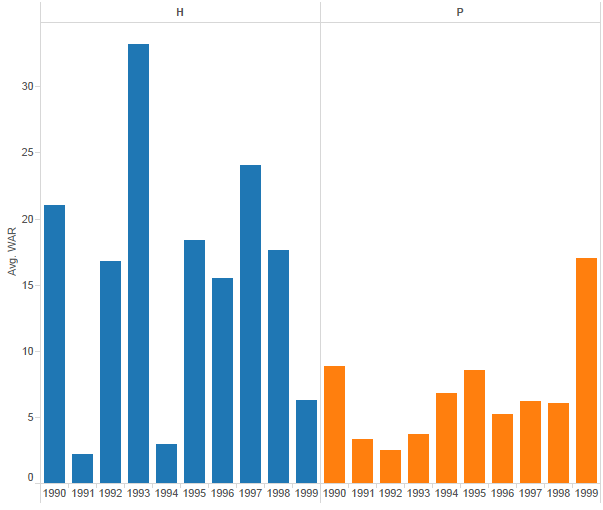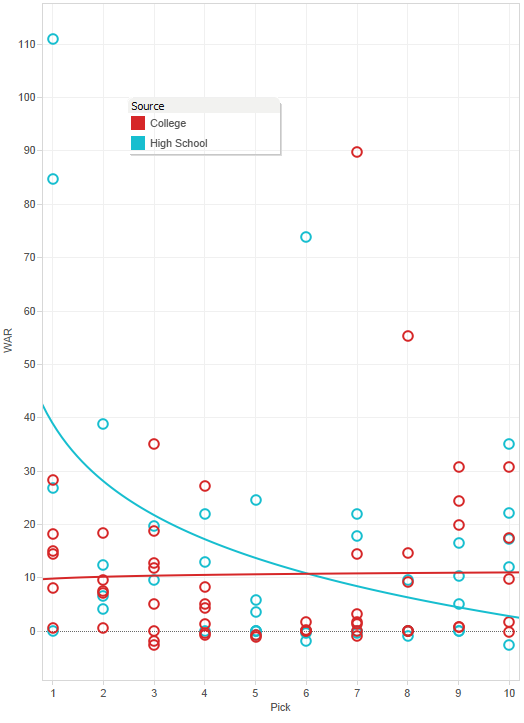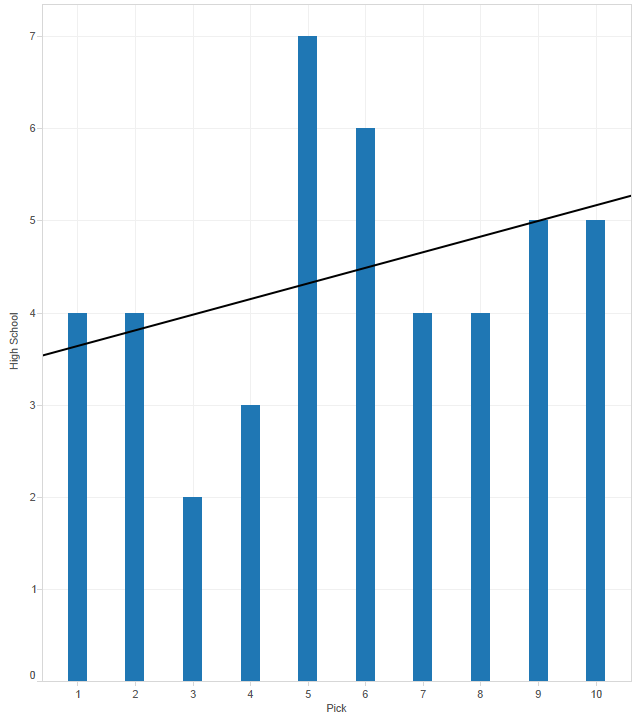Andrelton Simmons is awesome.
If you are reading this article on FanGraphs.com right now, this comes as no surprise to you. And I’m not using “awesome” in the way people use it to describe the latest episode of Pretty Little Liars or whatever vanilla bullshit thing they’re drinking from Starbucks. I’m using it in its literal definition of being awe-inspiring:
awe·some, adjective. inspiring an overwhelming feeling of reverence, admiration, or fear; causing or inducing awe: an awesome sight.
The reason you know Andrelton Simmons to be awesome is because of the things he does in the field while playing shortstop. Here, be inspired by awe:

Awesome.
But he’s not a bad hitter, either. In fact, right now, in 2014, he has been a pretty great hitter. His 146 wRC+ is sixth among shortstops and he has a higher wOBA than Hanley Ramirez. His .268 isolated slugging percentage exceeds Edwin Encarnacion’s mark from 2013, and Edwin Encarnacion slugged 36 dingers that year. In 45 plate appearances, Simmons hasn’t struck out one time. Andrelton Simmons, thus far, appears to be making strides at the plate.
When you’re the best defensive player in the major leagues, you don’t need to do much with the bat to be a pretty great player. Last season, you may be surprised to find out that Simmons, despite not even being a league-average hitter, racked up 4.6 WAR. That total was good for 13th in the National League, right next to teammate Freddie Freeman who finished fifth in the MVP voting and also made a really great stretch in that .gif up there.
Anyway, I’m really starting to bury the lede, although I guess really the lede is right there in the title, which I have to assume you read considering you clicked on it and are now here.
Simmons received a couple of 8th and 9th place MVP votes last season while being a below-average hitter. Simmons, thus far, appears to be getting better as a hitter. Just how much better would Andrelton Simmons need to be at the plate to be the best player in the National League?
Let’s begin:
Intro
First, we need to figure out what our endgame here is. We want Simmons to be the most valuable player in the National League. The average WAR of National League MVP winners over the last four seasons is 7.4. We’re going to see what improvements, in areas other than the field, we can make to Simmons’ game in an attempt to get him to at least 7.0 WAR to get him in the discussion. In order to accumulate the most WAR possible, we’re going to assume that Simmons plays all 162 games and racks up 679 plate appearances for the Braves in this hypothetical MVP season. He played in 157 in his first full-length season last year and figures to play pretty much everyday until something goes wrong. The 679 PA is simply an extrapolation of his 2012 plate appearances.
Batting average
Last season, Simmons batted just .248. Not many people win MVP awards with batting averages under .250. Lucky for Simmons, he appeared to be unlucky. His .247 batting average on balls in play was fifth-lowest of all qualified batters in 2013, and was 50 points less than the league average. We know he isn’t going to sustain a BABIP 50 points less than the league average. However, Simmons does have a flaw in his batting profile that makes him especially susceptible to a low BABIP. He led the MLB with 38 infield pop-ups last season. Infield pop-ups literally never go for hits, so it’s not as easy as just regressing his BABIP back to the league average. His career BABIP is .262 and the league average is .297. Let’s say he cuts into his infield pop-ups a bit and gets a little lucky on grounders finding holes over the course of the season. We’ll meet in the middle and call it .280.
Plate discipline
Simmons’ plate discipline was already the strong suit of his offensive profile and it appears to only be getting better. Last year, Simmons’ contact rate was 87.5%, a top-10 mark in the National League. As I mentioned earlier, he has yet to strike out one time this season, the only starter in the MLB who can still make that claim. Last year, Simmons’ strikeout percentage was 8.4%. Considering his strikeout-less streak to begin the season, we can expect improvement on that number. I’ll side with Steamer on this one, whose updated 2014 projection has him finishing with a strikeout percentage of 7.5%.
As is typical with a player that has such high contact rates, Simmons doesn’t walk much. Why take pitches when you’re one of the best in the league at putting the bat on the ball? Last year, Simmons had a walk percentage of 6.1%. With his improved strikeout rate, we can assume a little bit of improvement in the walk department as well, but not much. We’ll bump it up to 6.5%.
Power
This is the part of Andrelton Simmons’ game that surprised people last season. First, he’s a shortstop, and most shortstops don’t hit for power. Second, he didn’t hit for power in the minor leagues. In 1,042 minor league plate appearances — a little less than two full seasons — Simmons only hit six home runs and never posted an isolated slugging percentage higher than .126. Simmons burst onto the scene last year by hitting 17 home runs and posting an ISO of .149. This year, through 11 games, Simmons has already hit two home runs and his ISO sits at a ridiculous .268.
The power appears to be real and is a result of his approach at the plate, which is unique. Most players with contact rates as high as Simmons — guys like Alexei Ramirez, Erick Aybar or Jose Altuve — make their mark by hitting line drives or hard ground balls that find holes. You usually either sell out for contact by using this approach, or sell out for power by trying to elevate the ball. But not Simmons. Despite having the highest contact rate of any qualified shortstop last season, Simmons also hit fly balls more than almost any other shortstop, giving him the batted ball profile of sluggers like Jay Bruce or Giancarlo Stanton. This allowed Simmons to rack up 17 dingers with a HR/FB% of just 7.9% last year.
His career HR/FB percentage is 8.1%. As he is still in his age-24 season, let’s say he bulks up a bit and is able to muster out 9.0% of his fly balls for home runs in our hypothetical MVP season. With his batted ball profile and improved plate discipline, this gives us 21 HR for Simmons.
Base running
This was also a weird part of Simmons’ game last year, but in the opposite way than the power. In the minor leagues, he stole 54 bases in a little less than two full seasons of service time. He didn’t have an elite success rate (69%), but he clearly has some speed. In 2013, Simmons stole just six bases and was thrown out five times. That is terrible. He only ran 11 times, which certainly has something to do with his poor success rate, but he also wasn’t getting on base at a very good clip last year. With his improved on-base skills in this exercise, he would have more opportunities to run. Let’s say he improves his success rate a bit, too, and racks up about 15 SB.
Last year, Simmons’ baserunning was estimated to have cost the Braves about -1.6 runs. This includes not only steal attempts, but taking extra bases and being thrown out trying to take extra bases on balls in play. If we assume Simmons is a little more efficient at taking the extra base and steals 15 bags while only being thrown out six or seven times, it’s not hard to imagine Simmons’ baserunning score (BsR) going from -1.6 to +1.5. In other words, from very slightly below average to very slightly above average.
Results
| Simmons |
AVG |
OBP |
ISO |
K% |
BB% |
BABIP |
HR/FB% |
| MVP Simmons |
.286 |
.331 |
.173 |
7.5% |
6.5% |
.280 |
9.0% |
| Career Simmons |
.261 |
.307 |
.150 |
8.6% |
6.1% |
.262 |
8.1% |
That’s about all it would take. Really, not that drastic of a difference. It’s improvement in every category across the board, yes, but I don’t think there’s a single one of these that couldn’t happen or appears unrealistic for a really good baseball player in his second season in the MLB at age 24.
Convert his offensive numbers into run values and you get a wRAA of 15.2, a BsR of 1.5 (as we stated earlier) and on defense a UZR of 24.6 (his career average). Yes, this assumes that he repeats his ridiculous defensive numbers from last season which likely aren’t sustainable, but he is Andrelton Simmons, after all, and is kind of in unprecedented territory. If he’s done it once before, he can probably do it again. Adjust all of that for position and park and this gives us our magic number of 7.0 WAR.
With the defensive ability that Andrelton Simmons has showcased thus far in his career, he would just need to hit about .285 with a .330 OBP, 20 homers and 15 steals to be in serious consideration for the NL MVP. Consider, say, Andrew McCutchen and Buster Posey have slight off-years where they fail to accumulate at least 7 WAR and see both of their teams miss the playoffs. As long as the Braves make the postseason, Andrelton Simmons could bring home more hardware than just a Gold Glove in 2014.

